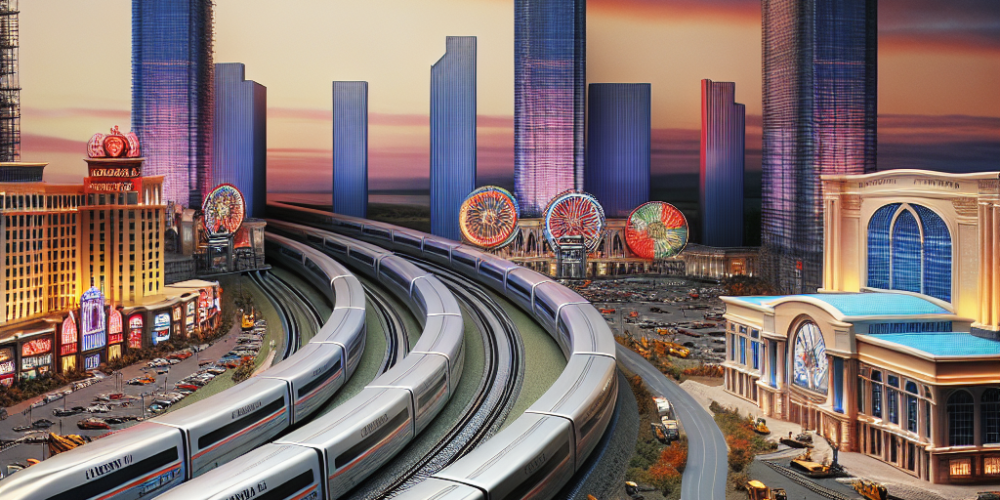In a major development poised to revolutionize travel and tourism in the Northeastern United States, government officials and private sector leaders have announced the commencement of a high-speed rail project designed to connect several key casino hubs across the region. This ambitious initiative aims to enhance economic growth, boost tourism, and provide a swift, eco-friendly transportation option for millions of tourists and locals alike.
The rail network, expected to be operational by 2028, will connect casinos in cities like Atlantic City, Philadelphia, and Baltimore, with stops in other significant urban centers known for their thriving gaming industries. The project, which has been in the planning stages for over a decade, recently secured final approval from federal and state authorities, paving the way for what many experts are calling a “game changer” for the Northeast’s economy and its gaming sector.
Transformative Impact on Regional Tourism and Economy
The introduction of a high-speed rail line is projected to significantly alter the economic landscape of the region. By facilitating easier and faster access to major casino destinations, the railway is expected to attract more visitors, thereby increasing revenue and creating thousands of jobs in the process. Additionally, this modern transportation option will likely appeal to environmentally conscious travelers, as it promises to reduce carbon emissions compared to car and air travel.
Casino operators along the rail line are optimistic about the project’s potential. “This high-speed rail project will not only benefit our casinos by making them more accessible to a broader audience but will also stimulate local economies and support businesses in the hospitality and retail sectors,” said Marissa Sanders, CEO of a popular casino group based in Atlantic City.
Technical and Financial Details
The rail project, estimated to cost around $7 billion, is a collaborative effort funded through a mix of federal grants, state bonds, and private investments. The trains are designed to run at speeds exceeding 250 miles per hour, making it possible to travel from Philadelphia to Atlantic City in under 30 minutes—a trip that currently takes about an hour by car.
Key features of the rail system include state-of-the-art safety measures, luxurious amenities, and connectivity options that cater to the modern traveler. Planners have highlighted the use of advanced technology to ensure punctuality and reliability, crucial factors for attracting commuters who might otherwise opt for personal or air travel.
Sharing the Enthusiasm: Stakeholder Reactions
Local governments have expressed strong support for the high-speed rail project, keen on the economic diversification and modernization it is expected to bring to their regions. “We are thrilled about the potential influx of tourists and the boost to our local economy,” stated Ellen Choi, mayor of a small town near one of the planned stations. “The rail line will bring us closer to major markets and provide our residents with fantastic new job opportunities.”
Meanwhile, the environmental benefits of the project have garnered praise from several sustainability organizations, which have long advocated for increased investment in green transportation options. “It’s encouraging to see a project of this scale prioritize environmental considerations. High-speed rail is a much-needed step towards reducing our transportation sector’s carbon footprint,” commented Alex Hart, director of a national environmental advocacy group.
Looking Ahead: Challenges and Expectations
Despite the excitement surrounding the rail project, there are challenges ahead. Construction will likely face technical, bureaucratic, and community-related hurdles. However, the comprehensive planning process and the collaborative nature of the project’s funding and execution model are expected to mitigate these challenges effectively.
As the project moves forward, all eyes will be on the Northeast, with stakeholders from various sectors watching to see how this major infrastructure endeavor might serve as a model for similar projects across the country. With benefits that stretch across economic, environmental, and social dimensions, the high-speed rail link between the Northeast’s casino hubs could well redefine the future of regional travel and set a new standard for integrated and sustainable tourism development.
*For the latest updates on this developing story, stay connected with our daily and weekly news roundups.*



